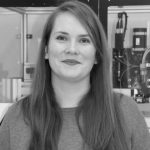AM has the potential to solve some of the world’s biggest problems, but to do so we must encourage new professionals with new skills to enter the industry. Collaboration is the key to a successful future, argues Meta Additive co-founder Dr Kate Black
AM is a radical, disruptive technology. We have the potential to change the world, whether that means helping to achieve net-zero through more sustainable manufacturing techniques, or improving healthcare for millions by producing quick, affordable medical appliances.
But if we want to achieve our true potential – our higher purpose if you will – we need to look differently at how we build our teams and encourage cross-sector collaboration.
It’s fair to say that the AM industry is currently dominated by engineers and designers. These people bring valuable skills to the table, of course, but if we want to continue to deliver world-changing innovation, we need to think bigger.
Let’s actively embrace new disciplines and new ways of thinking, and let’s put cross-discipline collaboration at the heart of our businesses.
Why? Because we will not only find better technical solutions to problems but also, more importantly, we will ensure the brightest possible future for our industry.
Solving big problems needs different minds
In the UK, I believe, we are missing an opportunity for a greater interface between science and engineering in the AM industry.
My personal experience is a good example: I’m a material scientist, who comes from a chemistry background, that ended up studying and then lecturing material science within the engineering department of the University of Liverpool.
Working at the juncture of those two very different disciplines – science and engineering – was a fantastically rich and thought-provoking experience.
It led directly to work on the AM innovation that my spin-out company is now taking forward into the real world (we are adapting binder-jet printing to be suitable for large-scale manufacturing).
I seriously doubt that such innovation would have happened if I hadn’t had a change to work across those two disciplines. For too long the mechanical engineering perspective has dominated AM.
Frequently, the approach is just to ‘shoe-horn’ materials into a machine in a clunky way. The industry uses a very limited set of materials, and it’s not refined in how it uses them. And, as I tell my university students, without materials manufacturing is nothing.
We need to recruit more scientists into our businesses, to increase our understanding of materials at a molecular level, so we can find new ways to manipulate them.
It’s not about throwing the baby out with the bathwater; we certainly still need the engineering skills, but let’s add some new perspectives into the mix.
Thinking bigger
And we can go even further: I believe AM can solve some of the world’s most pressing challenges. We’re a fast-moving, radical discipline with massive potential.
But with such great power comes great responsibility. With such speed comes the risk of failure. The solution? I believe it lies in embracing critical thinking and diversity in the industry.
We need to be more ambitious than just combining science and engineering.
As the industry moves forward, I want to see us encouraging cross-sector collaboration, with new professional figures with different skills, joining the industry to bring us a wider perspective.
We need big thinkers like social scientists, psychologists, even philosophers, to help us understand the ethical ramifications of the technologies we are developing, and to ensure they are harnessed for the greater good.
We need creative thinkers and people from different backgrounds to challenge us, to find solutions to problems we may not even know exist, to help us imagine big, bold ideas for the future.
Finding new people
How do we find these people? How do we raise awareness of AM to a wider audience and attract the cream of the crop?
I think we need to start by recruiting differently, by challenging ourselves not to simply hire people in our own mould, and by showcasing the value and purpose of our work.
To do this we need help from the recruitment industry and, more critically, from education (a root and branch shake-up of how STEM subjects are taught in schools and universities is long overdue).
Collaborating with partners is also vital to bigger picture thinking: in such a fast-moving sector no single organisation can do it all.
The most innovative AM businesses already understand this, and there you will find partners and suppliers collaborating at the highest level in pursuit of genuinely game-changing innovation.
Let’s broaden our minds throughout 2022 and beyond. The world has some huge challenges ahead, and AM can help to fix them, but only if we open ourselves up to new ways of thinking.
About the Author: 
Dr Kate Black is the co-founder of Meta Additive (part of Desktop Metal), whose mission is to elevate the AM industry through innovation, collaboration and chemistry.
She is a part-time lecturer at the University of Liverpool, where she worked for 10 years before founding the business in 2019.






